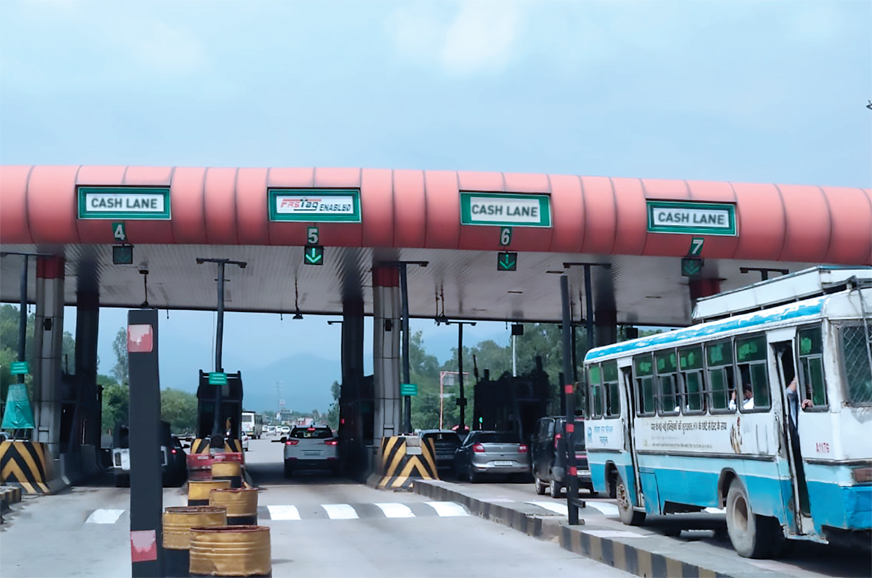
The open road, you, your machine, and the feeling of freedom. That is until you see a toll plaza loom in the distance and the long lines of taillights snaking from it. Suddenly, it’s like you’re back in bumper-to-bumper city traffic. Of course, the queue you’re not in is moving faster than yours and some genius thinks he can sneak his SUV into the line just ahead of you. Don’t forget the people arguing to be allowed through without paying the toll, and those who decide to look for cash only when it’s their turn to pay. Also, there’s that one toll operator who decides to use candy as currency. Brilliant. The wonders of the not-so-open road. But now, there is a solution. The National Payments Corporation of India (NPCI) has developed the National Electronic Toll Collection (NETC) programme to make paying tolls on national highways a much simpler and faster affair. Read on if saving time, saving fuel and adding convenience to your life interests you.
Presenting the FASTag
FASTag is a device that uses Radio Frequency Identification (RFID) technology to make cashless toll payments without requiring you to stop your car. At the moment, this tag works at over 500 toll plazas across all the national highways and selected state highways in the country.
Here’s what’s important. So far, the FASTag was optional. From December 1, 2019, the FASTag will be made mandatory on national highways across the country. This means, post the mentioned date, all the lanes at the National Highway toll plaza will be enable for toll collection through FASTag, with only one lane available for collection through Cash.
How does it work?
Once attached to the inside of your windshield, the RFID tag is linked with your car’s registration. When you drive through a toll plaza, dedicated lanes with FASTag readers will detect your tagged vehicle, read it, deduct the necessary amount from the linked prepaid bank account, and authenticate your journey through the toll plaza. All this without requiring you to stop your car or wait in a queue.
It’s easy and convenient. FASTags are available at select toll plazas and bank branches, retail POS locations, issuer bank websites, Amazon website, and on the official My FASTag app on the Google Play Store. The price of a FASTag is fixed at Rs 100, but the threshold balance to be loaded in the FASTag account will differ as per the issuer’s transaction rules, so you may want to check them all out before you order one.
You also need the following documents:
- Vehicle registration certificate
- Vehicle owner’s passport size photo
- Vehicle owner’s identity and address proof, e.g. Aadhar Card/ Passport
Photocopies may need to be submitted, but originals are required for verification.
Currently, 22 banks, as follows, are issuing FASTags.
Tried and Tested
In case you’re wondering whether FASTags will work smoothly, have no fear. FASTags were first implemented over four years ago as a measure to reduce cash handling, promote digital payments, reduce fuel consumption, and increase transparency. In September 2019, an average of 9.7 lakh transactions were processed daily through FASTags across the country. Since the programme began, over 56 crore FASTag payments, amounting to Rs 13,449 crore, were processed till the end of September 19.
Avoid the last-minute rush and apply for a FASTag here - https://www.npci.org.in/request-fastag Make the most of the open road.
from Autocar India https://ift.tt/2QAouC3
via IFTTT

No comments:
Post a Comment